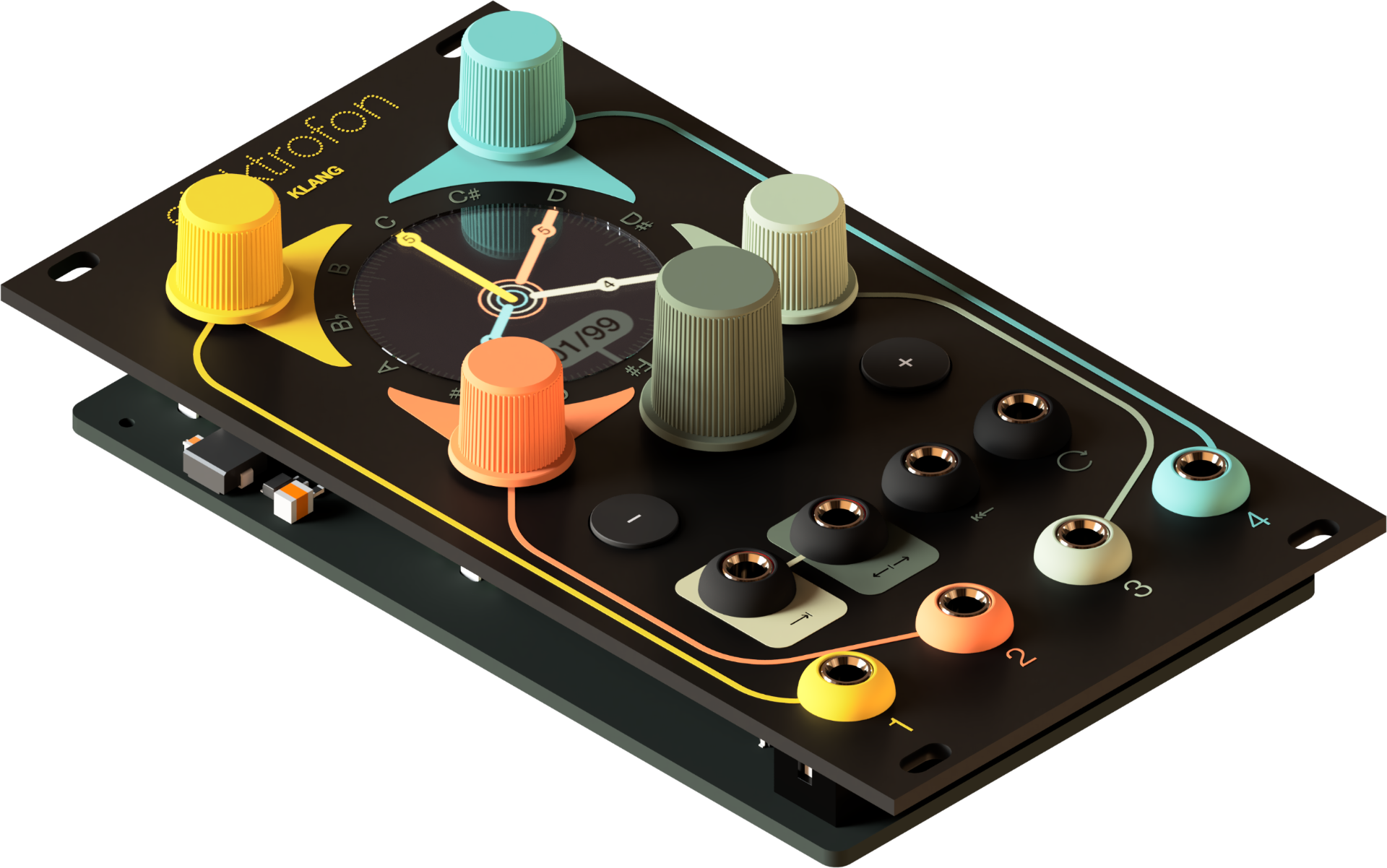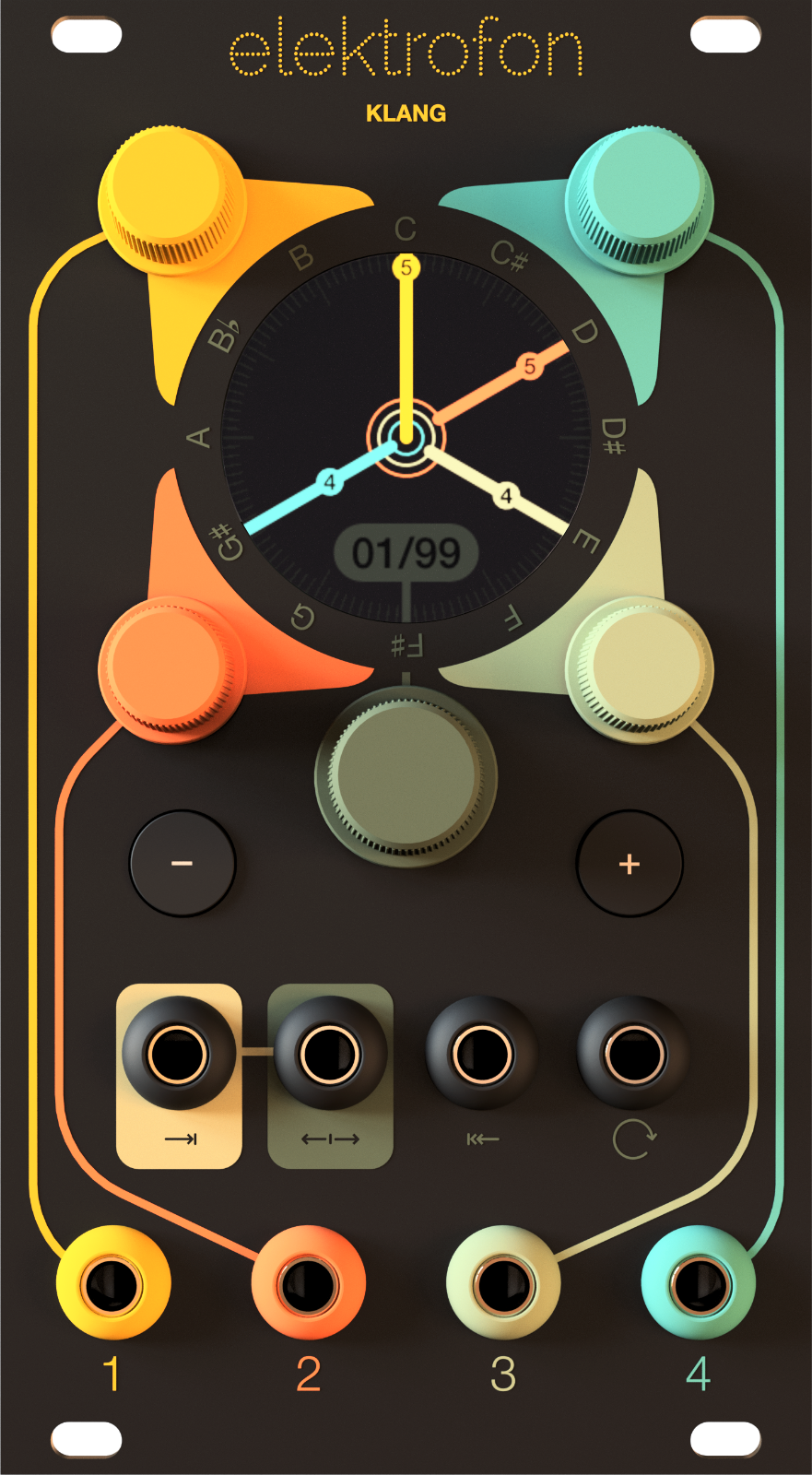Each of the four voices of Klang is color coded. The current state of a voice is given by its dial position on the display. You set the dial position by turning the same color knob, and if you press the knob whilst turing you can fine tune the position and go between semitones.
KLANG stores changes on every user interaction – Always ensuring you are right where you left off when you power on your system. This is done by utilizing a special memory technology enabling billions of write cycles and a lifespan of hundreds of years.

